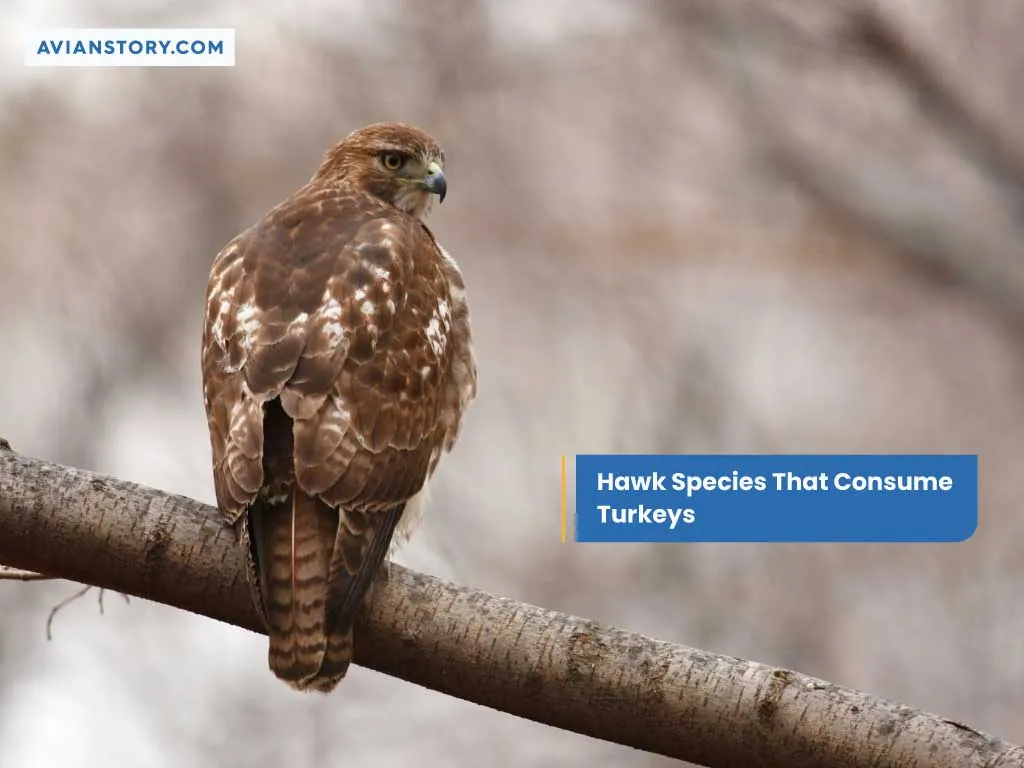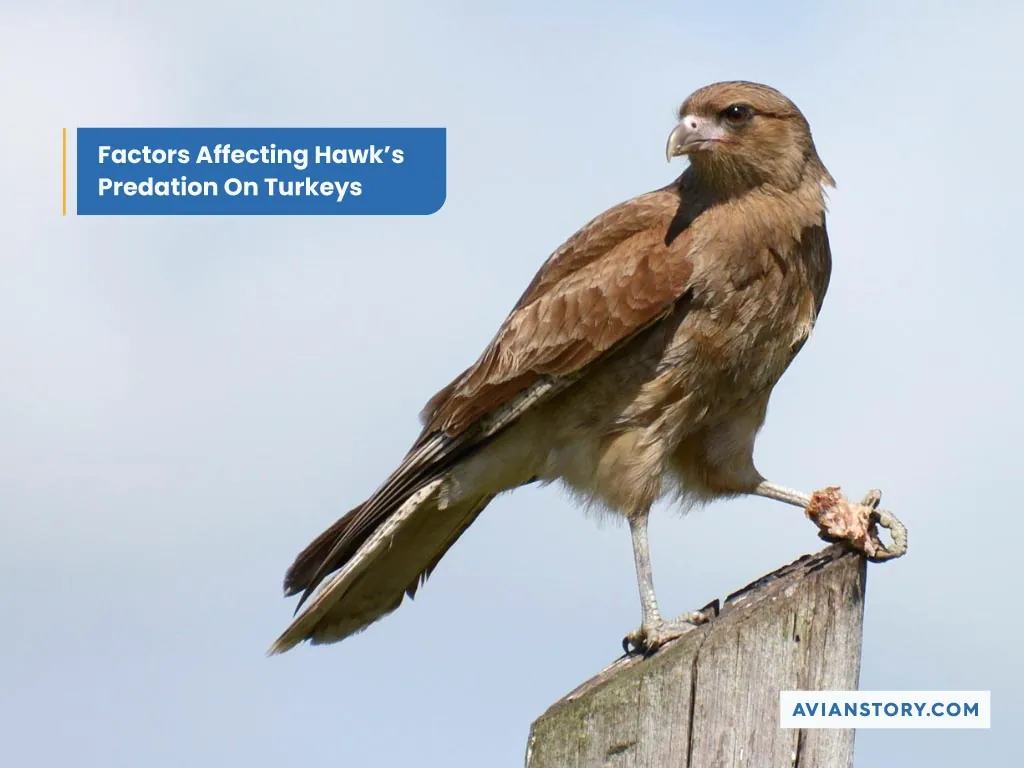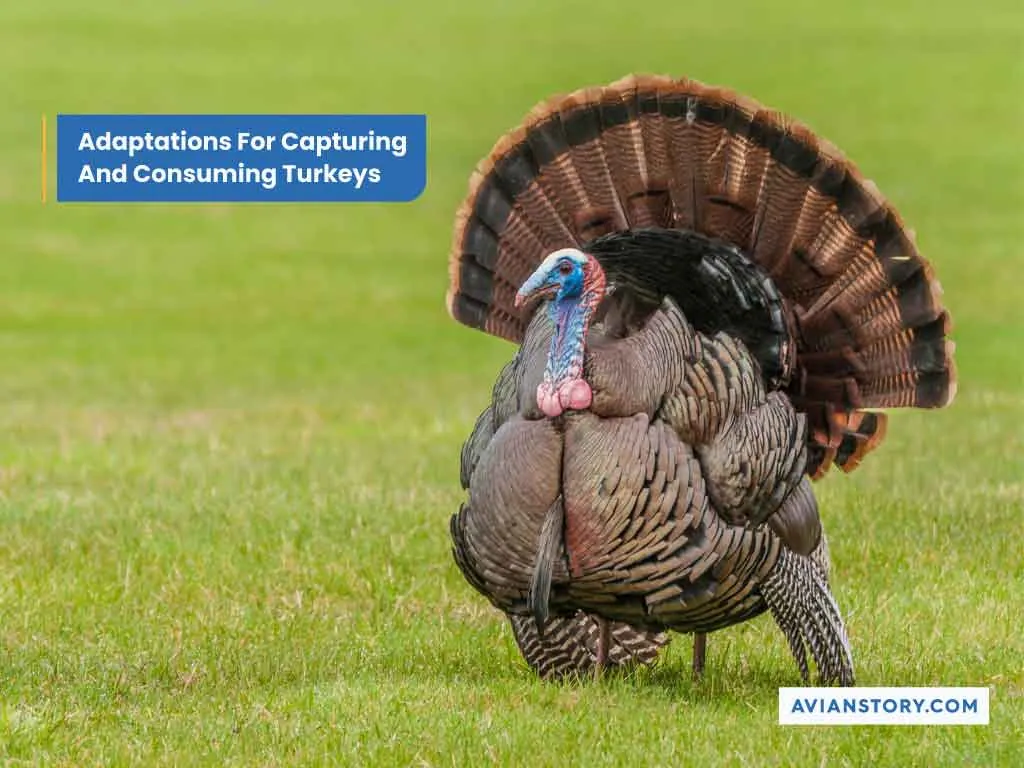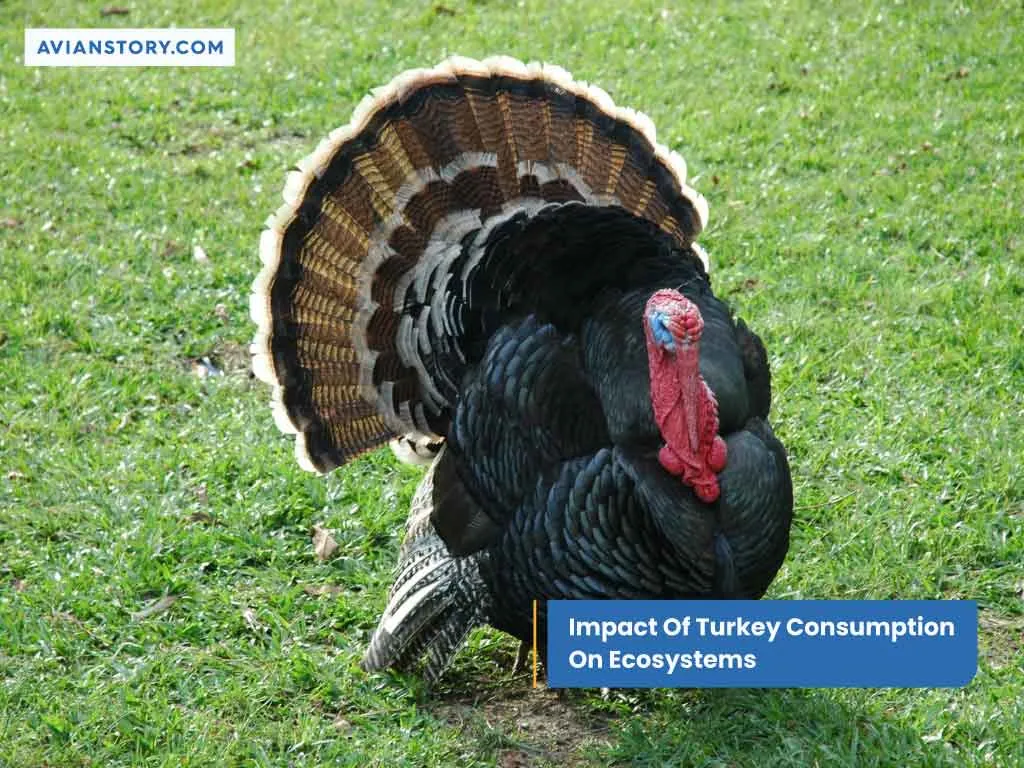Do Hawks Eat Turkeys? Understanding The Relationship Between Hawks And Turkeys
If you’ve ever wondered if hawks eat turkeys, you’re not alone. This question has perplexed wildlife enthusiasts and bird watchers alike. The thought of these two majestic birds crossing paths is thrilling and intriguing. Today, we’ll look at their fascinating relationship.
To answer your question, yes, hawks do eat turkeys. Hawks are known for their predatory nature and hunting habits, which include preying on small mammals, birds, reptiles, and insects. Although hawks may prey on turkeys, it is not a common occurrence, and the likelihood of it occurring depends on several factors, including the turkey’s age and the hawk’s size.
Understanding the relationship between these two birds can help us appreciate their role in the ecosystem and how we can conserve their populations. This article will examine the relationship between hawks and turkeys and conservation efforts to protect them.
Hawk Species That Consume Turkeys

What do hawks eat? Hawks commonly prey on smaller prey such as reptiles, birds, fish, and amphibians. They will only go after larger prey like turkeys if they are desperate for food or if the opportunity arises.
However, several hawk species exist in North America, including the Red-tailed hawk, Cooper’s hawk, and sharp-shinned hawk that prey on turkeys.
- Red-tailed Hawk: The red-tailed hawk is one of North America’s largest hawks, with a wingspan of up to four feet. It is common in open areas such as fields and deserts, where it hunts for prey from above. The red-tailed hawk is a fearsome predator known to attack and kill turkeys.
- Copper’s Hawk: The Cooper’s hawk is another hawk species known to hunt turkeys. This hawk is smaller than the red-tailed hawk but equally skilled at hunting. The Cooper’s hawk is found in woodland areas and is frequently seen darting through the trees in pursuit of its prey.
- Sharp-Shined Hawk: The sharp-shinned hawk is the smallest of the three species mentioned here, but don’t let its size fool you. This hawk is a skilled hunter known for its swift and agile movements. It is often found in open woodlands and has been known to hunt turkeys.
Since many species eat turkeys, do hawks eat turkey eggs? Hawks do not typically eat turkey eggs, as they are not a significant food source.
Hawks are skilled hunters, and their hunting habits depend on their species and the environment in which they live.
Some hawks hunt by perching on trees or other high vantage points and waiting for their prey to come within striking distance. On the other hand, other hawks hunt by flying low to the ground and catching their prey by surprise. Some hawks are also known for their aerial acrobatics, which allows them to see their prey mid-flight.
Overview Of Wild Turkeys (Meleagris gallopavo)

Here is an overview of the wild turkey.
Description And Characteristics
Turkeys are large birds that are found in various parts of North America. They are characterized by their impressive size and unique physical features, which include a featherless head, a fan-shaped tail, and a fleshy wattle that hangs from their necks.
The wild turkey (Meleagris gallopavo) is the original species that is native to North America and is known for its impressive size and striking plumage.
The males, known as toms, have brightly colored feathers and a distinctive, fleshy protuberance called a snood that hangs over their beaks. A mature tom can grow up to 4 feet (1.2 meters) in length and weigh between 11-24 pounds (5-11 kilograms).
Female turkeys, known as hens, are generally smaller than toms and have duller feather colors. They weigh 5-12 pounds (2-5.5 kilograms) and have duller plumage than males.
The wild turkey lives in groups called flocks. The flocks typically consist of several hens and their offspring, while toms often form separate groups or wander alone during the breeding season.
Habitat And Distribution
Wild turkeys can be found in various habitats across North America, including woodlands, grasslands, and swamps. They are especially common in areas with dense vegetation and a mix of open spaces and cover for protection.
Wild turkeys can be found from southern Canada to central Mexico but are most common in the eastern and southeastern United States.
Diet And Behavior
Turkeys are social birds known for their unique behaviors. They are highly vocal and use various sounds to communicate with each other, including gobbling, clucking, and purring.
They are also known for their impressive courtship displays, which involve puffing up their feathers and spreading their tails to attract a mate.
Turkeys are primarily herbivores and have a varied diet that includes seeds, nuts, fruits, and insects. During the winter, when food sources are scarce, turkeys often feed on buds and twigs from trees and shrubs.
Factors Affecting Hawks’ Predation On Turkeys

Several factors can affect a hawk’s predation on turkeys. They include the following.
Geographic Distribution And Habitat Overlap
Hawks that live in forested areas, where turkeys are most commonly found, are more likely to prey on turkeys than hawks in other environments.
Turkeys are primarily ground-dwelling birds, and hawks that hunt from perches in trees have a better view of the ground and are more likely to spot potential prey.
Availability of Alternative Prey
If other prey species, such as small mammals or birds, are more abundant, hawks may not focus on turkeys as often. Additionally, hawks may target turkeys if alternative prey isn’t easier to catch or requires more hunting energy.
Turkey Age And Vulnerability
Do hawks eat baby turkeys? If they have the opportunity, hawks eat baby turkeys, known as poults. Poults are vulnerable to predation and often targeted by predators, including hawks.
Adult turkeys will often defend their young against predators. But poults that have become separated from their mother or are otherwise vulnerable may be more susceptible to predation by hawks.
Adult turkeys, on the other hand, are larger and more powerful but can be vulnerable if they are injured or sick.
Size And Strength Of The Hawk
Larger hawk species, such as the red-tailed hawk, have more power and strength to take down larger prey, including adult turkeys. Smaller hawk species, such as the sharp-shinned hawk, may only be able to target smaller prey, such as poults or young turkeys.
Hunting Techniques For Capturing Turkeys

Hunting techniques employed by hawks can vary depending on the species of hawk and the age and behavior of the turkey. Here are some common hunting techniques hawks use when hunting turkeys:
- Perch hunting: Here, the hawk perches on a high vantage point, such as a tree branch, and scans the surrounding area for prey. When a turkey is spotted, the hawk will swoop down from the perch to capture the game.
- Aerial attacks: This involves the hawk swooping down to capture the prey. Hawks can use this technique to capture both poults and adult turkeys, but it is more commonly used to capture poults.
- Cooperative hunting: Some hawk species use this method which involves a group of hawks working together to capture larger prey, such as adult turkeys. One hawk will launch the attack, followed by the others, who will take turns attacking the target until it is captured.
- Ground hunting: Some hawk species, such as Cooper’s hawk, employ ground hunting techniques to capture turkeys. This technique involves the hawk stalking its prey on the ground and launching a surprise attack.
This hunting technique is more commonly used to capture smaller prey, such as rodents or squirrels, but can be used to capture poults or young turkeys.
Now you may be wondering, “Do hawks eat squirrels?” Yes, they do. Squirrels are one of the most common prey items for many hawk species because they are relatively large compared to other small mammals and are abundant in many areas.
Adaptations For Capturing And Consuming Turkeys

Hawks have developed physical and behavioral adaptations that allow them to thrive in their natural environment and to capture and consume turkeys effectively. They include:
Physical Adaptations
1. Talons:
Hawks have sharp talons that are designed to grip and hold prey securely. These talons are also strong enough to pierce the skin and flesh of turkeys, allowing hawks to grab their prey and carry or drag it to a safe location for consumption.
2. Beak:
Hawks have strong, sharp beaks that they use to tear apart the flesh of their prey. Hawk beaks are curved and pointed, allowing them to rip apart turkey meat and bones efficiently.
This adaptation allows hawks to consume their prey quickly and efficiently, reducing the risk of other predators stealing their food.
3. Vision:
Hawks have excellent vision, which is essential for spotting and tracking prey. Their eyes are in the front of their heads, giving them binocular vision and depth perception.
They also have a high density of photoreceptors in their retinas, allowing them to see fine details and detect movement from a distance. This adaptation enables hawks to locate and track turkeys from high in the air, making them formidable hunters.
Behavioral Adaptations
1. Stealth And Surprise:
Hawks use their keen vision to spot turkeys from afar, then swoop down silently and quickly to catch them off guard. This stealthy approach is an effective hunting technique, allowing hawks to capture their prey before they have a chance to flee.
2. Patience:
Another necessary adaptation of hawks is their patience. They may spend hours or even days perched high in a tree, waiting for the perfect opportunity to strike. This patience allows hawks to conserve energy and avoid unnecessary effort during their hunt.
3. Handling Larger Prey:
Hawks can hunt prey much larger than themselves. This ability is partly due to physical adaptations such as strong talons and sharp beaks. However, it also necessitates behavioral changes such as careful planning and execution.
Hawks may also cooperate to take down larger prey or use their strength and agility to subdue their prey before devouring it.
Impact Of Turkey Consumption On Ecosystems

Humans can influence the possibility of hawks preying on turkeys in several ways:
Population Control Of Turkey Species
Hawks play an important role in the control of turkey populations. Hawks help to keep turkey numbers in check and prevent overpopulation by preying on them. As a result, the ecosystem maintains a healthy balance.
Effects On Forest Communities And Food Web Dynamics
Because turkeys are an essential food source for hawks, their consumption can impact the populations of other species in the ecosystem.
For example, suppose hawks consume a large number of turkeys. In that case, this may reduce the number of seeds and insects that turkeys would have consumed, potentially affecting the populations of plants and insects.
Role In Nutrient Cycling
When hawks eat turkeys, they break down the meat and bones into nutrients. These nutrients are then returned to the ecosystem via the nutrient cycling process.
This process is critical for maintaining ecosystem health because it ensures that nutrients are continually recycled and made available to other organisms in the food web.
Conservation Efforts
Here are some of the measures that can be taken to ensure the long-term survival of hawks and turkeys:
Habitat Restoration And Preservation
Conservationists preserve existing forests and restore degraded habitats to combat habitat loss and fragmentation. This involves reforestation, conservation easements, and creating wildlife corridors to connect fragmented habitats.
Education And Awareness Campaigns
Outreach efforts can include public lectures, workshops, school programs, and targeted campaigns for specific audiences, such as hunters and landowners. By informing the public about the importance of these species and the threats they face, conservationists can build support for sustainable land use practices.
Monitoring Hawk Populations And Their Impacts
This includes tracking the distribution and abundance of hawks and turkeys in different habitats and their reproductive success and overall health. By analyzing this data, conservationists can identify areas where conservation efforts are needed and develop targeted management plans.
Conclusion
The relationship between hawks and turkeys is complex and fascinating. Hawks are potent predators that often include turkeys in their diet. This is mainly in North America, where various species of hawks coexist with different turkeys.
Hawks’ predation on turkeys depends on the hawk’s size, the turkeys’ age, habitat conditions, and availability of alternative prey. Hawks employ various hunting techniques, including perch hunting, to capture turkeys.
Through scientific research, conservation efforts, and education, we can better understand and appreciate the ecological importance of hawks and turkeys. We can work towards their conservation for the benefit of our ecosystems and future generations to come. It is our responsibility to protect and conserve these magnificent birds and the habitats they depend on to ensure a sustainable and healthy environment.
